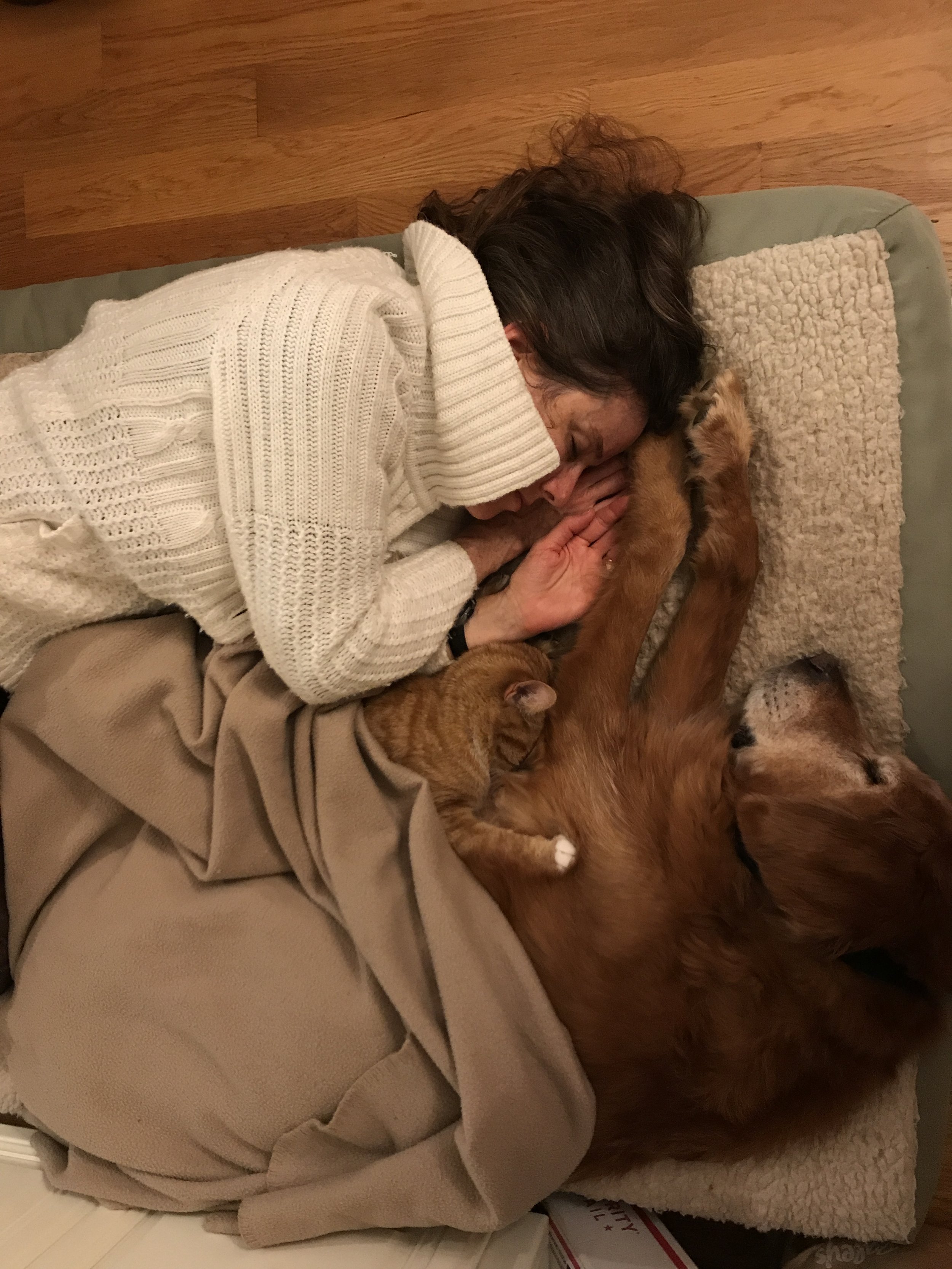Understanding Human-Animal Bonds
Being a pet parent is an incredible experience filled with joyful, enriching memories for both you and your animal companion. These human-animal bonds can bring a unique set of dynamics and benefits to people's lives that differ from human-human relationships.
First and foremost, what are human-animal bonds?
While many of us may know the feeling of a “human-animal bond”, it can be hard to put into words. Many have tried to define what it actually means. One organization in particular, the American Veterinary Medical Association, considers such a bond as being, “a mutually beneficial and dynamic relationship between people and animals that is influenced by behaviors essential to the health and wellbeing of both.” They elaborate to say this relationship consists of humans, animals, and the environment interacting on a physical, emotional, and psychological level. While this definition may seem confusing, you are more than likely to have been doing so on a regular basis.
Let’s look at a dog-human relationship, one of the most frequent human-animal bonds around. You take your canine companion out for a half-hour jog around their favorite nature trail. Here your connection is on full display. You get the benefit of companionship by having your best friend by your side as you exercise. Meanwhile, your dog has the benefit of getting to explore the natural outdoors, fulfilling their intrinsic need to go outside. On a physical level, you both get to exercise when interacting with the trail. Emotionally, you and your dog may feel energized and notice a ‘pep in your step’ due to the fresh air. Finally, the time spent between you and your dog friend allows you to psychologically reinforce that bond you two share.
What types of human-animal bonds are out there?
The Society for Companion Animal Studies has a definition of pet ownership. According to them, it is “usually informal interactions where owners simply enjoy the companionship of their pet”. However, ‘pet parenthood’ is only one of the several ways people may connect with other species. The SCAS also details other types of bonds people commonly share with animals. Assistance animals, who are oftentimes dogs, provide practical and emotional support for people with disabilities. After receiving certain training, they can improve the lives of theirs pet parents. Therapy dogs aren’t typically formally trained but aim to enhance a person’s mental health by providing attention and comfort.
What’s to gain from bonding with animals?
Hopefully, by now you think the upside of your human-canine relationship goes beyond funny videos to share on Facebook. From being workplace assets to helping with everyday tasks, there is a multitude of benefits that come from human-animal bonds. The Colorado-based Lone Tree Veterinary Medical Center goes into detail with even more benefits. According to them, pets can help those looking to reduce stress as petting animals has shown to lower blood pressure.
Having a pet in your home has shown to also build immunity within children. Studies have shown that kids who grow up with household pets have fewer allergies and lower chances of developing asthma. Remember that ‘pep in your step’ I attributed to fresh air earlier? Well, Lone Tree has also reported that even something as minute as stroking an animal increases dopamine and serotonin levels. These two brain chemicals are essential to our feelings of happiness and relaxation. Humans to human relationships benefit from the presence of human-animal bonds. Seniors who may not be able to socialize often can use pets, to engage with neighbors and friends.
On top of that, pets discipline us in a number of ways. Michigan State University has cataloged what people can learn from a pet, particularly young children. One of the first skills, according to MSU, that we can learn from human-animal bonds is responsibility. To quote, “[p]ets require food, water, and love.” While kids are expected to be constantly in ‘play mode’ especially with an animal, pets allow children to understand that there will be times where you have to properly care for an animal (whether it be feeding, grooming, changing potty pads, etc.) even if it’s an inconvenience for them.
Human-animal bonds: the bottom line
Over time, this consistent time spent with their pet(s) leads to children learning trust. Children receive unconditional support from their animal companions in times of distress. In turn, kids learn to trust themselves as well as build trust in other relationships moving forward. The Oakland Veterinary Referral Services has shown us what pets teach us about love. “Our dogs don’t care what we look like, how much money we make, or how clean our homes are. They are thrilled to see us every time we walk in the door, no matter what life throws our way.”
While the focus here was around dogs, I think the same principle applies to other animals. They don’t share many superficial or materialistic values that we may find in people.
In addition to the lessons we can learn from our relationships with a pet, there are also lessons with their unfortunate passing. “The idea that grief can often be the price love is helpful in developing resistance,” says psychotherapist Jessica Harvey as quoted by Kerry Hannon in the New York Times. In the article Hannon reports a study finding that participants improved their sense of empathy for others after the loss of a pet.
For children, the loss of a pet may be their first experience with death. A pet’s passing lets children know that “Nothing’s around forever". They can come to terms with the idea that losing someone can be an extremely painful time. Through this experience and with a proper support system, children are better equipped to handle their emotions in the future. For adults, the death of a pet acts as a “reset” to remind us of the impermanent nature of life.
To Wrap Things Up…
As time has progressed, humans have adapted to where they socialize with other living creatures around them. While we know about the responsibility needed to feed, shelter, and care for animals, our relationship is far from one-way. In return, people who watch out for animals receive responsibility, loyalty, companionship, and love that often goes unrivaled. Regardless of the human-animal bond contexts, they continue to enhance the quality of life for animal caretakers around the world.
Looking to build a bond with your animal companion outdoors?
See our Elderly Pet Devices page for additional tools to help manage your pet when on-the-go.




